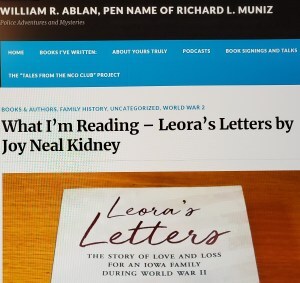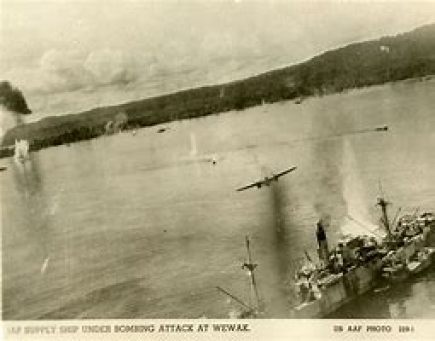What I’m Reading – by William R. Ablan, Pen Name of Richard L. Muniz

This is the second time I’ve read through Joy’s book. I’m intending over the next few months to read all four books in her series, and of course started with the first. It’s rather pathetic on my part that I never really gave it a proper review.
So, Here goes.
If you’re not familiar with her first of four books, Joy inherited boxes full of letters and telegrams that were written to family members from five uncles during WW II. As a result, much of the perspective is from the people who received the letters. In short, the book takes place in a setting largely ignored in the histories of WW II, and that’s home.
What we have are small snapshots from the men on the front lines, and then the reactions and lives of the people getting the letters. In some cases, the letters have been censored so details of location, units, arms, and so on aren’t referenced. This often left the folks at home with more questions than answers, some of which wouldn’t be answered (if ever) for months or years.
There are several high points of drama in the book. One was from her Uncle Donald who was on the Yorktown. The folks back home have an idea that a critical battle has been fought at Midway, but all they know is the Yorktown was hit. When Donald writes from the Battleship California, it’s clear there’s more to the story than the carrier being hit. It was sometime before it was confirmed sunk. Donald Wilson was up to his eyeballs in trying to save the Yorktown after it had been hit and they were going to try to tow it back to Pearl before being sunk by a Japanese submarine. That by itself would make an epic story.
Perhaps some of the hardest hitting parts was the two brothers becoming MIAs. Danny flew the vaunted P-38 Lightning. On a raid in Austria, he disappeared. Turns out he was shot down and given a proper burial by the Germans.
New Guinea
There’s no such closure for Dale. His B-25 was hit and seen to crash into the sea about one and half miles from the targets they’d hit (shipping and facilities at Wewak – a Japanese stronghold in northern New Guinea). The reports are a little contradictory. In one letter, the plane was seen to be under some manner of control, hit the ocean, bounced and then settled in, an almost classic belly landing at sea. Given the limited amount of time they were under observation (twenty to thirty seconds – remember, the rest of the bombers were fleeing the area to avoid being shot down themselves), no one was seen to escape. Another account says the plane hit and broke up, sinking almost immediately. Both accounts agree that no one was seen to leave the aircraft.
A few days later, a short-wave broadcast was received indicating Dale Wilson and his crew were POWs. But at the end of the war, nothing is known about their fates.
This is history at its best because it caused me to do go out and learn something. Where was Wewak? What’s the story there? There was an airfield and harbor there. There was also a POW camp there, but the majority of the inmates were from India. Several of the survivors state that they occasionally saw Americans and British there. I also found the names of Known POWs from the US Japan held. Dale Wilson’s name isn’t among them, nor are those of his crew. That wasn’t a surprise considering the Japanese POW system was a joke and a mess at the same time. Given the broadcast (and multiple stations received it), it makes one wonder if the Japanese had indeed captured the crew or what happened. Were they killed and any trace of them vanished (destroyed reports) in subsequent attacks. Were they taken somewhere else and simply “Lost” as happened to so many. Were bodies recovered and through a clerical mistake put in the POW category instead of dead. We may never know.

But reading the accounts from home also shows that along with the big questions, life went on. There were still crops to plant, babies to be born (including the author), and dreams to fulfill. Despite pain, heartbreak, dashed hopes, these people pushed on and survived the loss of three of five sons.
One thing the book does a first-class job of is preserving family history. To many times, things like these letters and pictures vanish into a box and are disposed of someplace. I recall as a child, that shortly after my great grandmother passed away, her house was being cleared out. We found drawers full of letters. Every letter was destroyed. Today, I look back and wonder what was in them. I guess I’ll never know.
I’m glad to see that hasn’t happened here. In addition to a great resource for history, it preserves something even more precious. It helps to ensure these people won’t vanish into the night.
I envy Joy that she was able to do this for her family and the future.
NOTE: This would make one heck of a movie or TV Series. Mr. Tom Hanks, think about it if you ever read this. I’ll be first in line to buy a ticket!
You might like to have a look at his website!



